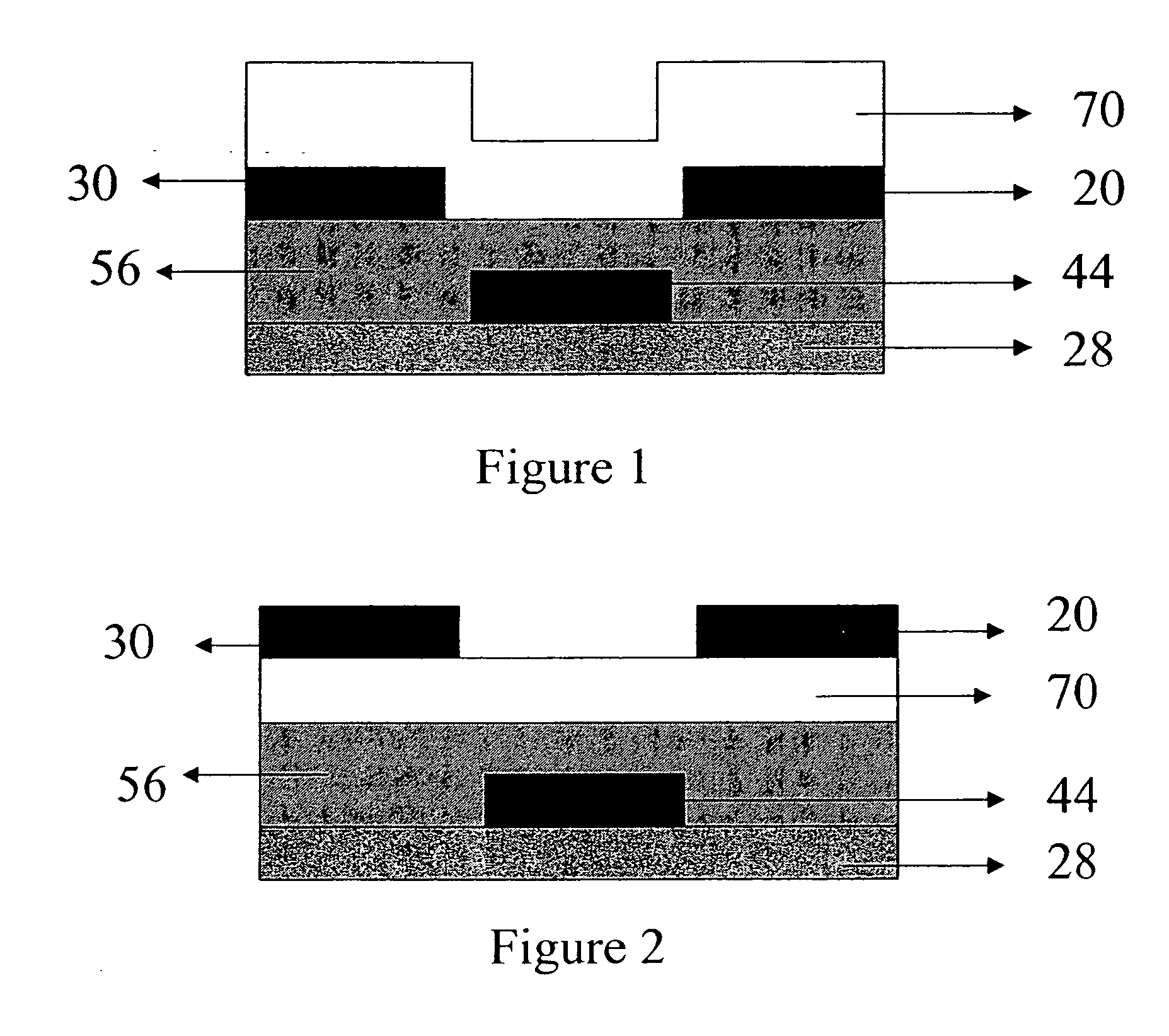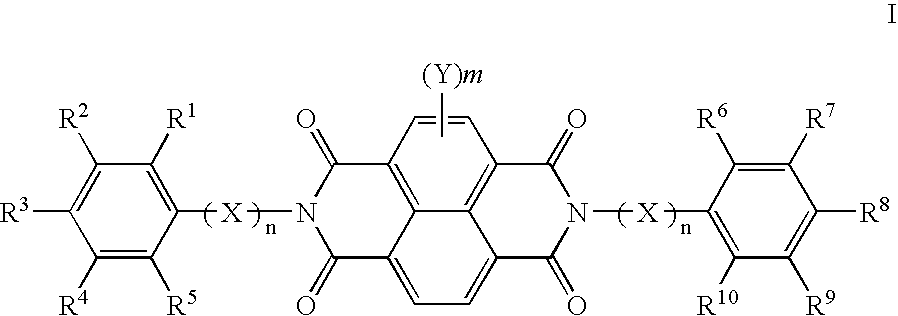N,N'-di(arylalkyl)-substituted naphthalene-based tetracarboxylic diimide compounds as n-type semiconductor materials for thin film transistors
a technology of tetracarboxylic diimide and di(arylalkyl) is applied in the direction of naphthalimide/phthalimide dye, thermoelectric device, nanoinformatics, etc., which can solve the problems of amorphous silicon still having its drawbacks, limited application of amorphous silicon to relatively low speed devices, and amorphous silicon
- Summary
- Abstract
- Description
- Claims
- Application Information
AI Technical Summary
Benefits of technology
Problems solved by technology
Method used
Image
Examples
example 2
[0082] This example demonstrates the improved performance of an n-type TFT device using N,N′-di(phenylethyl)-1,4,5,8-naphthalene tetracarboxylic acid diimide, Compound I-1 in accordance with the present invention.
[0083] An n-type TFT device comprising Compound I-1 as the active material was made as in Example 1. Accordingly, compound I-1 was deposited by vacuum sublimation at a pressure of 2×10−7 Torr and a rate of 0.1 Angstroms per second to a thickness of 25 nm as measured by a quartz crystal. During deposition the substrate was held at a constant temperature of 90° C. The sample was exposed to air for a short time prior to subsequent deposition of Ag source and drain electrodes through a shadow mask to a thickness of 50 nm. The devices made had an approximately 420 micron channel width, with channel lengths varying from 50 to 175 microns. Multiple organic thin film transistors (OTFTs) were prepared and representative sample of 4 to 12 OTFTs were tested for each deposition run. T...
example 3
[0086] This example demonstrates the improved performance n-type TFT device made from a fluorine-containing N,N′-di(4-methylphenyl)ethyl-1,4,5,8-naphthalene tetracarboxylic acid diimide, Compound I-4. An n-type TFT device using compound I-4 as the active material of the OTFT was made as in Example 1. Multiple OTFTs were prepared and tested for each deposition run. The averaged results appear in Table 2 below.
TABLE 2ActiveOTFTμσVthσMaterial(cm2 / Vs)(μ)(V)(Vth)Ion / IoffComparativeC-10.0640.03757.33.62.3 × 104Example 1InventiveI-40.1430.07655.82.53.0 × 104Example 3
[0087] This example clearly demonstrates the advantage of Compound I-4 as n-type material. The mobility is improved over Comparative Example 1, clearly demonstrating the beneficial effect of the (4-methylphenyl)ethyl groups on device performance.
example 4
[0088] This example demonstrates the improved performance n-type TFT device made from N,N′-di(3-methylbenzyl)-1,4,5,8-naphthalene tetracarboxylic acid diimide, Compound I-10. An n-type TFT device using Compound I-10 as the active material of the OTFT was made as in Example 1. Multiple OTFTs were prepared and tested for each deposition run. The averaged results appear in Table 3 below.
TABLE 3ActiveOTFTμσVthσMaterial(cm2 / Vs)(μ)(V)(Vth)Ion / IoffComparisonC-10.0640.03757.33.62.3 × 104Example 1InventiveI-100.070.03553.62.05.4 × 104Example 4
[0089] This example clearly demonstrates the advantage of Compound I-10 as n-type material. From the slope of the (ID)1 / 2 versus VG plot saturation region mobilities of up to 0.12 cm2 / Vs were measured from similar devices prepared in this way.
PUM
 Login to View More
Login to View More Abstract
Description
Claims
Application Information
 Login to View More
Login to View More - R&D
- Intellectual Property
- Life Sciences
- Materials
- Tech Scout
- Unparalleled Data Quality
- Higher Quality Content
- 60% Fewer Hallucinations
Browse by: Latest US Patents, China's latest patents, Technical Efficacy Thesaurus, Application Domain, Technology Topic, Popular Technical Reports.
© 2025 PatSnap. All rights reserved.Legal|Privacy policy|Modern Slavery Act Transparency Statement|Sitemap|About US| Contact US: help@patsnap.com



